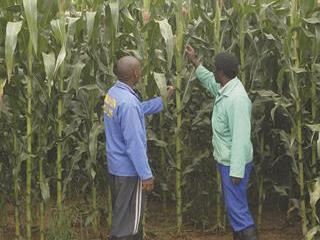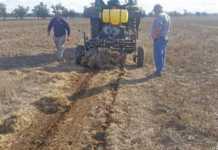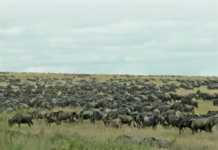
Two seasons ago, I took 10 soil samples for analysis from three different farms in the KZN’s Midlands to determine the organic and inorganic nitrogen status. The samples were taken just after the maize had been planted.
Almost all the samples revealed an organic nitrogen content of 80kg/ha to 100kg/ha. This wasn’t surprising as all the soils were high in humus (organic carbon above 3%).What was surprising was the large amount of inorganic nitrogen per hectare.
The average was 248kg/ha, the lowest 142kg/ha and the highest a staggering 472kg/ha! All the lands had been planted with fertiliser mixes to supply 20kg/ha of nitrogen. All three farmers were advised not to use any nitrogen top dressing. All complied and all had excellent yields.
A record maize silage crop was produced on one of the farms. In the best section the crop was physically measured. It produced 100t/ha of green material and 37t/ha of dry material.
The 20kg/ha fertiliser mix was unnecessary – wasted money – as this particular land had 80kg/ha of organic nitrogen and 376kg/ha inorganic nitrogen. On average, the saving in nitrogen applied was over R1 000/ha, which made a big difference to profitability.
How to measure nitrogen in soil
To measure organic nitrogen, take a normal soil sample to a depth of 150mm and submit it to a lab that does organic nitrogen analysis and gives the amount of available nitrogen in kilogram per hectare.
To measure inorganic nitrogen, you need a soil auger that will go down to 800mm if required. Follow these steps:
Sample to effective root depth – you may need to dig a soil profile hole to determine this. This will require emptying the auger repeatedly as you go deeper. Dump the soil into a large, clean and oval plastic wash tub with low sides. It’s much more difficult to mix soil in a deep round tub.
After each hole, mix the soil thoroughly, and then fill one standard size sample box – about 0,5kg of soil.
To start with, take one sample per 10ha, provided the land is fairly uniform. Normally, there’s not a large variation in results of samples taken from the same land. If there is a large variation, reduce the area per sample.
Empty each sample box into a separate plastic tray and leave it in the sun to dry, stirring with a wooden spoon to speed up the process. On a hot day, samples will dry in 45 minutes.
On overcast days, you can use a blower heater to dry the samples. It’s very important to dry them within a few hours of taking them – the sooner the better.
Send your samples to the Agricultural Research Council (ARC) in Rustenburg. The cost is currently R40/sample. You can contact the ARC on 014 536 3150 or send a mail to Private Bag X 82075, Rustenburg, 0300.
My coaching time has expired. In the next issue, I’ll discuss interpreting the results and how to determine the amount of nitrogen to apply for the next maize crop.












